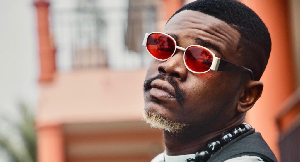Scientists have uncovered hidden signatures in the brains of people in vegetative states that suggest they may have a glimmer of consciousness.
Doctors normally consider these patients - who have severe brain injuries - to be unaware of the world around them although they appear awake.
Researchers hope their work will help identify those who are actually conscious, but unable to communicate.
Their report appears in PLoS Computational Biology.
Awake but unaware After catastrophic brain injuries, for example due to car crashes or major heart attacks, some people can appear to wake up yet do not respond to events around them.
Doctors describe these patients as being in a vegetative state. Patients typically open their eyes and look around, but cannot react to commands or make any purposeful movements. Some people remain in this state for many years.
But a handful of recent studies have questioned this diagnosis - suggesting some patients may actually be aware of what is going on around them, but unable to communicate.
A team of scientists at Cambridge University studied 13 patients in vegetative states, mapping the electrical activity of their nerves using a mesh of electrodes applied to their scalps.
The electrical patterns and connections they recorded were then compared with healthy volunteers.
The study reveals four of the 13 patients had an electrical signature that was very similar to those seen in the volunteers.
Dr Srivas Chennu, who led the research, said: "This suggests some of the brain networks that support consciousness in healthy adults may be well-preserved in a number of people in persistent vegetative state too."
Tennis test In the second stage of their experiment, scientists arranged for these four patients to have their brains scanned using an MRI machine while being asked to imagine playing tennis.
Previous research shows the area of the brain linked to planning movement lights up when some people in vegetative states performed the task.
And the Cambridge team found three of their patients had similar results - suggesting they were conscious enough to understand a command and to decide to follow it through.
Dr Chennu added: "This type of information might be helpful for families and the healthcare team looking after the patient”.
"We have heard anecdotally that carers change their level of interaction with patients once they know there may be some hope of awareness".
Dr Tristan Bekinschtein, who was also also involved in the research, said there were some limitations to the test, but "with other tests it could help in the clinical assessment of patients".
He added: "If a patient's awareness networks are intact, then we know that they are likely to be aware of what is going on around them".
Infos Santé of Monday, 20 October 2014
Source: BBC













